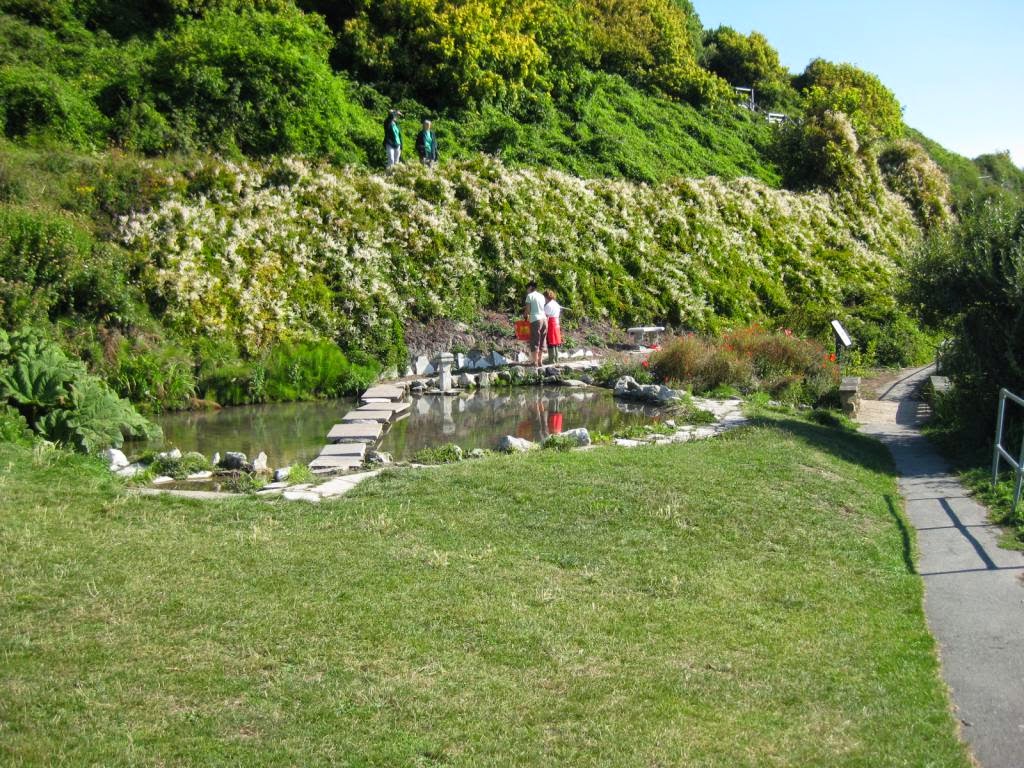Sue's Photographs.
The long trek.....
Guelder rose berries.
A common blue butterfly.
Carrie's Photographs.
With the (much needed) overnight rain cleared, it was off to Quarr Abbey for this week's GG session. Turning in from the main road and heading to the car park was whole new experience.... gone is the rough track and bumpy car park, all replaced by a nice new driveway and a well laid out parking area. The workman explained that it was the first of two open days to show off all the new facilities made possible by a Lottery grant. All VERY impressive....
We were tasked to work in a field to the north west of the land around the Abbey so it was something of a route march across the fields before any work could commence. Some wooden pallets and old carpeting came in handy for traversing the barbwire fence at two separate places. Needless to say, this all took extra time but we were soon walking through the woods and being shown the task in hand. Along the boundary line of the land was a ditch which had become somewhat grown in
(a huge understatement!) The plan was that we should clear as much of the overgrown material as possible so that a mechanical digger could be brought in, at a later date, to dredge the ditch. With the workforce split into two teams we started working towards each other, clearing as we went. One group faced huge brambles and the other a blackthorn thicket, so progress was hard going but considerable inroads was made during the session. Unfortunately we did not make that "Channel Tunnel digging breakthrough moment" so perhaps we could have a future session to complete it?
With it now being the summer holiday period, the attendance numbers were down a little so, a huge WELL DONE to those who came along to work on what turned out to be quite a difficult task.
Carrie's Nature Lesson.
This week’s find was a tree covered in the beautiful red berries of the Guelder Rose (Viburnum Opulus). These trees are found on the edges of woods, marshes and hedgerows, growing in both heavy clay and acidic soil. It is also deciduous and a member of the honeysuckle family, growing up to ten feet high. The flowers are shaped like a wheel with the outer flowers having five petals and sterile, while the inner flowers are fertile and very small. These provide nectar for pollinating insects, and in August turn into the beautiful red berries in the picture.
The red berries are very attractive to birds, who then spread the seeds around, although some trees can self-pollinate, while some are sterile and do not have berries. It can be invasive, taking over another plant’s area to spread out for more sunlight, while its bark is used as a herbal medicine for cramps and asthma, and the berries can be used for ink.
Many thanks to Carrie for the photographs and Nature Lesson and to Sue for her photographs.










































